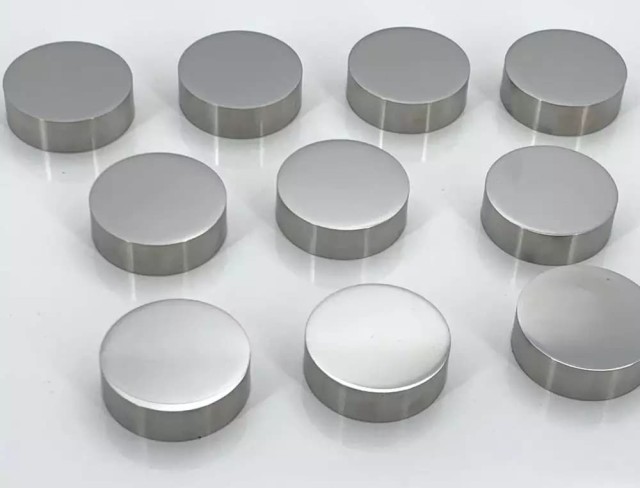What is a stamping die
During the stamping process. A stamping die is a tablet press die that compresses a sample or tablet during the stamping process. The stamping die is placed on top of the tablet press and the sample is placed on top of the die then compression molded to the desired shape and size.
The working end faces of the upper and lower punches of the stamping die form the surface shape of the tablet, and the diameter of the middle die is the diameter of the tablet. The dies are mounted in a frame, and the frame is attached to the press.
The punching die consists of three parts: the upper punch, the middle die, and the lower punch. The middle die is the main working element and is usually made of a harder material than the upper and lower punches. The upper and lower punches are used to create the desired shape in the metal sheet.
as that of the lower punch The structure of the upper and lower punches of the die is similar, and the diameter of the punch is also the same as that of the lower punch. The main difference between the two types of punches is the length of the shank. The upper punch has a shorter shank than the lower punch, so that it can be inserted into the die cavity from the top.
The upper and lower punches of the punching die need to have a very precise punch diameter in order to be able to slide up and down freely in the middle die hole without any gaps where powder can leak. The machining accuracy requirements for the die are therefore very high.
Shape of stamping die
There are various shapes for the end face of a punch, depending on the desired use. A flat shape is great for general purpose use, while a hypotenuse shape is useful for creating sharp edges. A shallow concave shape is ideal for making shallow indentations, while a deep concave shape is perfect for making deeper indentations. There is also a comprehensive shape that can be used for a variety of purposes.
Punches are important in the tablet compression process because they determine the shape and size of the tablet. There are different types of punches that can be used depending on the type of tablet being compressed. Flat, beveled punches are used to compress flat cylindrical tablets or samples. Shallow concave punches are used to compress biconvex tablets or samples. Deep concave punches are mainly used to compress the core of coated tablets. The integrated punch is mainly used for compressing special-shaped tablets.
In order to identify the pressed samples, the sample name, dosage, and vertical and horizontal lines can be engraved on the end face of the die. This will help to distinguish the pressed samples from one another and make it easier to identify the desired sample.
The die should be filled with the proper amount of powder. The die should be tapped on a hard surface a few times to allow the powder to settle. A Punches should be placed onto the die and tamped with a tamper. The die should be placed on the bottom plate of the press and the upper plate brought down with even pressure to produce a Tablet. A die is a tool that is used to press powder into a sample of a desired shape and size. The die is filled with powder, tapped on a hard surface to settle the powder, and then placed on the bottom plate of a press. A punch is placed on top of the die, and the upper plate is brought down with even pressure to produce a tablet.
Cleaning and maintenance of stamping dies
If the mold is deformed, it will affect the test results of the sample.When using a mold, it is important to wipe the surface clean with dust-free paper to prevent the anti-rust oil from affecting the test results. Be careful not to exceed the pressure when applying pressure, as this can deform the mold and affect the test results.
If the mold is not used for a long time, it is necessary to coat the mold with anti-rust oil and store it in a dry environment. This will help to avoid corrosion of the mold.
Precautions for the use of stamping dies
Place the mold in the center of the tablet press, and the maximum bearing capacity of the mold should not be exceeded during pressurization. The mold needs to be replaced if there are any cracks or damages.
If there is any sample residue on the surface of the mold that cannot be removed, please do not wash and soak with chemical reagents; please contact us for further directions. Washing the mold with chemical reagents may damage the mold and affect the analysis.
If you don't plan on using your mold for a while, it's a good idea to apply some anti-rust oil to the surface. This will help to prevent the mold from rusting over time.
If the mold is not used for a long time, the mold needs to be stored in a dry environment to prevent it from rusting.
Related Products
- Single Punch Electric Tablet Press Machine Laboratory Powder Tablet Punching TDP Tablet Press
- Single Punch Tablet Press Machine and Mass Production Rotary Tablet Punching Machine for TDP
- Automatic Laboratory Hydraulic Pellet Press Machine for Lab Use
- Single Punch Electric Tablet Press Machine TDP Tablet Punching Machine
- Multi-Punch Rotary Tablet Press Mold Ring for Rotating Oval and Square Molds
Related Articles
- Sample preparation and unloading method of electric tablet press
- Lab Scale Mini Tablet Press: Applications, Processes, and Features
- Understanding the Tablet Press Machine R&D Lab Model and its Features(2)
- In-depth Analysis of Tablet Press Machine R&D Lab Model (1)
- The working process of the tablet press you should know













